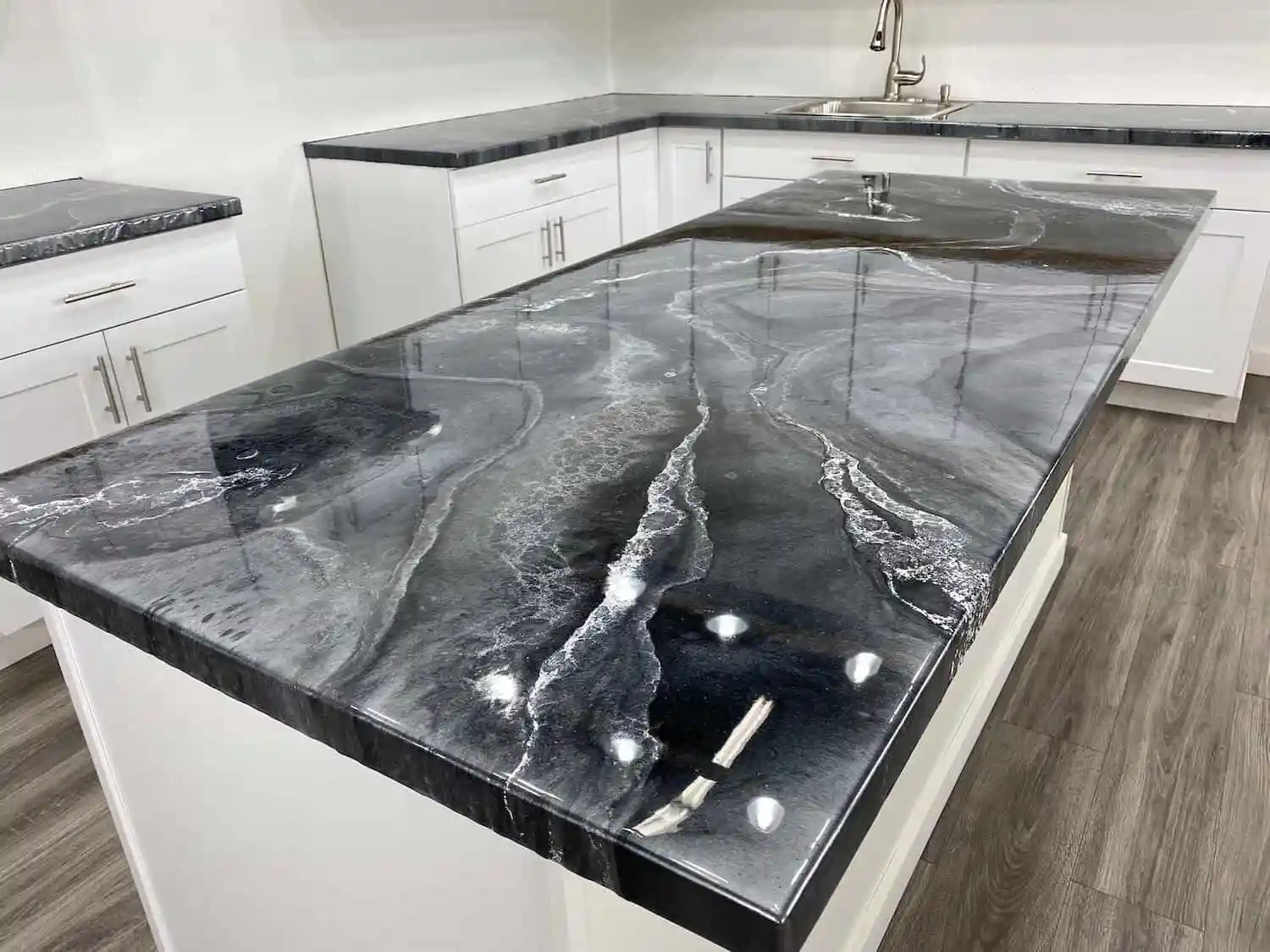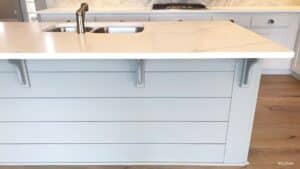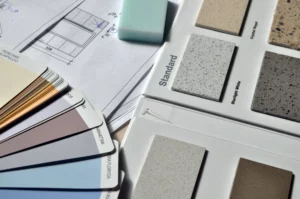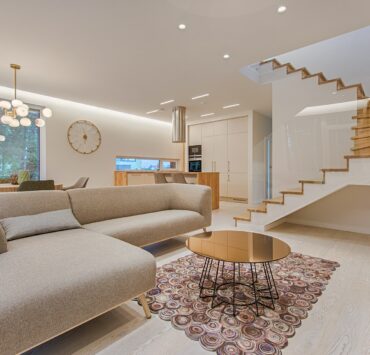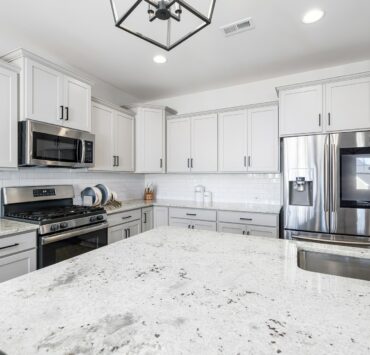Say Hello to Epoxy Countertop
What Is Epoxy Countertop
An Epoxy Countertop is a refinishing product, the topmost layer of an existing countertop. It’s made of resin and a hardening agent that forms a smooth, food-safe, non-toxic, highly durable top layer when poured over a surface. Whether you want to refresh an old look or breathe new life into a worn-out surface, an epoxy countertop is a fantastic option to elevate the look of your space.
Unless you’ve got an incredibly discerning eye for marble, it’s hard to tell the difference between an epoxy countertop from a marble countertop. Both feature that coveted gorgeous high-gloss finish. But instead of installing a hard marble slab onto your countertop, you pour it epoxy instead.
Epoxy Countertop Pros And Cons
Look up epoxy countertops, and you’ll find a spectrum of opinions on how worthwhile installing them is. Here are some pros and cons to help navigate whether or not epoxy countertops are for you.
Epoxy Countertop Pros
1. More Affordable And Accessible Than Marble
Epoxy Kits are readily available. Epoxy kits range from $100-$200, with approximately $100 per square foot for professional installation. Compared to marble slabs ranging from $40 to $100 per square foot, epoxy countertops or stone coat countertops are a more cost-efficient option for people wanting the look of marble without having to pay the price.
2. Refurbishes Existing Material
Opting for epoxy countertops means you don’t have to overhaul all your material in a space. Instead, you prolong the usage of an otherwise worn-out countertop. Granite, ceramic, cement, and wooden countertops can be made new with an epoxy finish.
3. Durable:
When properly applied, an epoxy countertop can last years without any issues while maintaining its gloss and shine with little to no maintenance. The everyday wear and tear countertops in the kitchen, such as heat from pots and pans, scrapes from utensils, and the sort, don’t pose much damage to resin countertops. To top it off, epoxy countertops don’t require additional layers of coating to keep them intact.
4. There’s Plenty Of Room For Customization
Like mixing paint, epoxy countertop kits give you options to blend colors into a base coat. You can opt for a dark or light base and work your way on the type of marbled look you want.
5. It’s Non-Porous
Epoxy countertops take well to most cleaning products without getting damaged. The non-porous finish of an epoxy countertop gives you a surface that leaves little room for bacteria and dirt to seep in and build up, which makes keeping it clean and sanitized extremely easy.
Epoxy Countertop Cons
1. Requires precision and skill even though it’s marketed as a DIY
Although epoxy countertops come in DIY kits, the process of successfully installing them requires a level of precision and know-how.
2. Prone To Stains
Epoxy countertops are prone to stains, especially with highly pigmented liquids, if not cleaned up immediately
3. Difficult To Undo
An epoxy countertop’s sturdiness and long-lasting qualities can work against you if or when you decide you no longer want it. Additionally, you only get one chance to apply the epoxy, so your final finish’s design is only as good as your first attempt.
How To Do Epoxy Countertop
If you have a wooden surface that looks a little worse for wear, or a concrete surface that could use a facelift, an epoxy countertop is an excellent option.
With the proper preparations, an epoxy countertop can become a DIY project where the results can be very satisfying.
Use the following steps as a guideline for successfully installing your epoxy countertop.
1. Clear the Area
Prep the area you plan to have your epoxy countertop by firstly clearing the area. This covers cutting out the backsplash, rounding out corners, filling in cracks, and sanding down bumps. The idea here is to pour the epoxy, so it lands smoothly and seamlessly. Any flaw on the base will reflect in the epoxy countertop.
2. Cover Your Floors And Counters
Once your surface is ready for pouring, the next step is to cover the rest of your kitchen. Set up drip catchers in appropriate areas and mask the rest of your kitchen with plastic to prevent unintended epoxy spills.
3. Prepare All Your Materials
It’s integral to have all your tools and materials ready and within arm’s reach before pouring. You’d be remiss not to have what you need ready to go because any delays or preparations during the pouring process can ruin your finish. Measure out everything accordingly and pre-mix your epoxy.
Get organized and have everything ready in this order:
- Primer, ready to be applied. Once applied to your chosen counter surface, you have approximately an hour before the primer becomes tacky and is prepared for pouring on a base coat of epoxy.
- While the primer is setting, pre-mix your epoxy according to the product instructions. Typically, this means mixing the metallic powder into the highlight.
- Wearing a glove, check the tackiness of the primer. You’ll know the primer is ready for a base coat of epoxy when it doesn’t leave any marks on the glove.
- Pouring On The Resin
Once your surface is primed and ready, now it’s time to pour the resin layers.
- Pour your basecoat of approximately ⅛ inch in thickness onto the center of your counter and roll it out to the sides with a roller. This pouring on an even base layer should be easy if your counter is levelled.
- Work the resin to the sides and edges of your counter.
- Once you’ve established your base coat, drizzle on your highlights. We suggest drizzling it on with a stirring stick to have more control over the amount of highlight that gets onto the base coat.
- Using a brush, feather your highlights until you achieve your desired marbled look. If you don’t want the highlight to look too blended, give your base layer a little extra time to harden before drizzling and feathering, so it’s harder to mix.
- Generously spray a mixture of isopropyl alcohol and a highlight mixture over the epoxy countertop.
- Check the edges and scrape off any excess resin.
- Give your epoxy counter at least 20 hours to settle. If you find any lumps after it’s settled, you can use sandpaper to smooth it down.
- Once your epoxy countertop is smoothed and settled, add a thick topcoat layer and roll it out evenly.
After a week, wipe your new counter clean and take a moment to relish the final result of your handy work!
Are Epoxy Countertops For You?
Epoxy countertops give the same luxurious look as marble at a fraction of the cost. Although not a cheap option, it is the more affordable option for those who want the look of a marble countertop.
If you’re willing to put in the work or to pay for professional installation of an epoxy countertop, know that you’re giving yourself a beautiful, sturdy, and unique countertop that’s easy to maintain, quick to clean, and is a lovely addition to your home that will last in the years to come.
